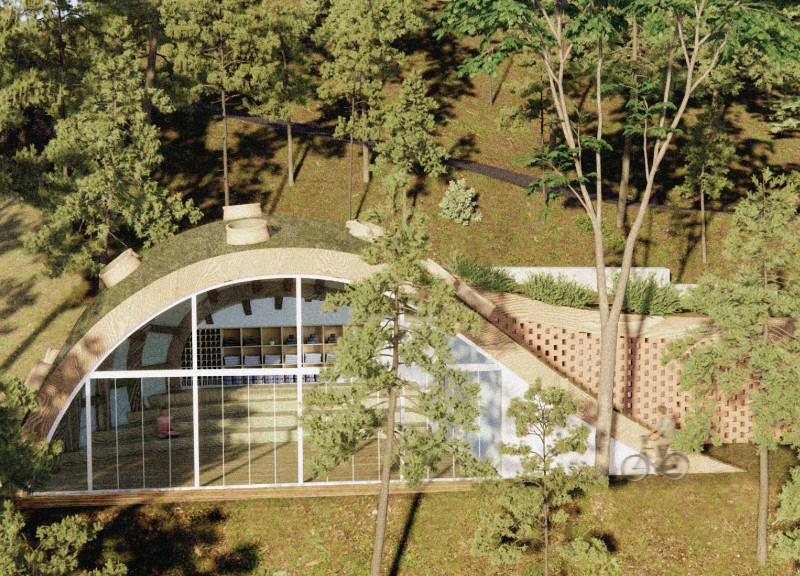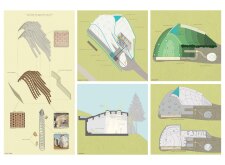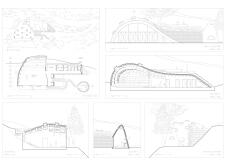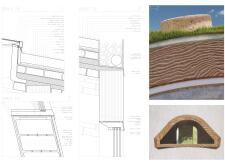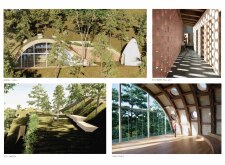5 key facts about this project
At its core, the design emphasizes functionality and flexibility, accommodating various activities such as yoga, social gatherings, and relaxation. The layout is intuitive, allowing for easy flow between different areas while maintaining a sense of intimacy and comfort. The communal spaces are deliberately designed to foster interaction, encouraging users to engage with each other and their environment.
Key elements of the project include the use of local materials, which not only minimize the ecological footprint but also enhance the sensory experience of the space. The structure predominantly utilizes adobe blocks for walls, offering thermal insulation and a tactile quality that connects inhabitants to traditional building methods. Concrete is another vital element, providing structural stability especially in the retaining walls. This careful selection of materials showcases an understanding of local climates and construction practices, further rooting the project within its geographical context.
The innovative use of laminated veneer lumber (LVL) beams and wooden blocking contributes to the overall robustness of the architecture while promoting sustainable forestry practices. The inclusion of glazing through windows and skylights is carefully balanced to maximize natural light, reducing the need for artificial illumination and enhancing the feeling of spaciousness. The integration of a green roof, which incorporates planting soil and vegetative layers, not only improves insulation but also serves to promote biodiversity, contributing to the local ecosystem.
A notable aspect of the design is the positioning of the solar array, which not only generates energy for the building but also represents a commitment to renewable resources. The project incorporates advanced water management systems, including rainwater filtration and drainage solutions, ensuring responsible resource usage that aligns with the sustainability goals of contemporary architecture.
The spatial arrangement reflects the organic forms found in nature, demonstrating a design approach that prioritizes fluidity and adaptability. This is further illustrated by the various structural rhythms and vaulted ceilings within the interior, which create a dynamic atmosphere that feels both expansive and welcoming. The interplay between different materials and textures throughout the architecture adds depth, allowing users to engage with the space on multiple sensory levels.
This project stands as a thoughtful exploration of architecture that balances modernity with tradition, engaging with the landscape while meeting the needs of its users. The nuanced design strategies invite conversation around sustainability and community, making it a relevant example for contemporary architectural discourse. For anyone interested in exploring the intricacies of this project further, including architectural plans, sections, and designs, a deeper examination of the details will provide valuable insights into its thoughtful execution and innovative ideas.


